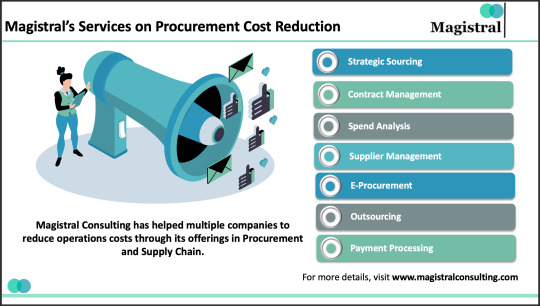#procurement outsourcing
Text

How You Can Overcome Digital Transformation Challenges
Prioritising customer experience is not just a key strategy for overcoming digital transformation challenges; it is the cornerstone of success in today’s rapidly evolving business landscape. By placing the customer at the centre of digital transformation initiatives, organisations can address resistance to change, modernise legacy systems, and leverage skilled talent to create seamless, personalised experiences that drive growth and differentiation.
Organisations encounter numerous challenges that hinder their efficiency and cost-effectiveness. Outdated systems, intricate regulations, a scarcity of skilled professionals, and the necessity to navigate unpredictable market conditions are among the common pain points faced by businesses.
However, raising the maturity of operations has evolved from being a mere option to becoming a strategic imperative for organisations aspiring to gain a competitive edge. By embarking on a comprehensive transformation journey, companies can unlock significant advantages such as improved operational efficiency, enhanced cost control, reduced risks, and increased visibility into their activities.
By embracing a customer-centric approach, businesses can navigate the complexities of digital transformation with agility and resilience, ultimately achieving their strategic objectives while delighting customers and building lasting relationships that fuel long-term success.
#procurement#finance#finance partnering#procurement solutions#program management#project management#procurement outsourcing#procurement training#business consultant#cash management
0 notes
Text
Procurement Strategy Handbook to Form the Path to Success
#procurement outsourcing#procurement strategy#supplier management#outsourcing services#magistral consulting
0 notes
Text
Building Resilient Supply Chains Through Effective Procure-to-Pay Strategies
In the ever-evolving landscape of global commerce, building resilient supply chains has become a strategic imperative for businesses seeking sustainable success. Central to this endeavor is the implementation of effective Procure-to-Pay (P2P) strategies, encompassing a range of processes from procurement planning to the final payment phase. In this blog, we will explore the significance of P2P strategies and how businesses can enhance resilience through procurement outsourcing, procure-to-pay consulting, and streamlined procurement processes.
Understanding Procure-to-Pay:
Procure-to-Pay is a comprehensive process that involves the entire lifecycle of procurement, from identifying the need for goods or services to making the final payment to suppliers. The key components of the Procure-to-Pay process include procurement planning, supplier selection, purchase order creation, goods receipt, invoice verification, and payment processing. A well-executed P2P process contributes to cost savings, efficiency, and overall supply chain resilience.
Procurement Planning:
Effective procurement planning is the foundation of a resilient supply chain. This involves forecasting demand, assessing supplier capabilities, and aligning procurement activities with business objectives. By leveraging data analytics and market intelligence, businesses can optimize procurement planning, ensuring that they source the right products at the right time and cost.
Procurement Outsourcing:
As businesses strive for resilience, many are turning to Procurement Business Process Outsourcing (BPO) services to enhance efficiency and focus on core competencies. Procurement outsourcing involves delegating specific procurement tasks, such as supplier identification, negotiation, and contract management, to specialized BPO providers. This strategic partnership allows businesses to tap into the expertise of procurement professionals, streamline processes, and achieve cost savings through economies of scale.
Procure-to-Pay Consulting:
Procure-to-Pay consulting services play a crucial role in optimizing and refining the entire procurement process. Experienced consultants can assess current P2P workflows, identify inefficiencies, and recommend tailored strategies for improvement. From technology integration to process redesign, P2P consulting provides businesses with actionable insights to enhance the resilience and effectiveness of their supply chains.
Streamlining Procurement Processes:
Efficient procurement processes are integral to building resilient supply chains. Automation technologies, such as Procure-to-Pay software, play a vital role in streamlining workflows, reducing errors, and accelerating the procurement lifecycle. Automated processes for purchase requisitions, approvals, and invoice processing contribute to operational efficiency and enable businesses to respond swiftly to changing market dynamics.
Benefits of Effective Procure-to-Pay Strategies:
1. Cost Savings: Streamlining procurement processes and leveraging procurement outsourcing can result in significant cost savings through better negotiations, reduced errors, and improved supplier management.
2. Risk Mitigation: Effective procurement planning and consulting services help businesses identify and mitigate risks in the supply chain. This includes anticipating disruptions, ensuring compliance, and fostering supplier relationships that contribute to resilience.
3. Operational Efficiency: Streamlined Procure-to-Pay processes enhance operational efficiency by reducing manual interventions, minimizing delays, and optimizing resource allocation.
4. Supplier Relationship Management: Building strong relationships with suppliers is critical for resilience. Effective P2P strategies, including outsourcing and consulting, contribute to fostering positive and collaborative partnerships with suppliers.
5. Agility and Adaptability: Resilient supply chains require agility and adaptability. Procurement outsourcing and consulting services provide businesses with the flexibility to respond quickly to market changes, emerging trends, and unforeseen disruptions.
In a global business environment marked by volatility and uncertainty, the importance of resilient supply chains cannot be overstated. Effective Procure-to-Pay strategies, encompassing procurement planning, outsourcing, consulting, and streamlined processes, are instrumental in building and maintaining such resilience. Businesses that strategically leverage these P2P approaches can enhance their competitive edge, optimize costs, and navigate the complexities of the supply chain landscape with greater confidence and adaptability. As the business world continues to evolve, the role of effective Procure-to-Pay strategies remains a cornerstone for sustained success and resilience.
#Procure to pay services#Procurement outsourcing#Procurement BPO#Procure-to-pay consulting#Procurement planning#Procurement process
0 notes
Text
Global Procurement Outsourcing Market Is Estimated To Witness High Growth Owing To Increasing Demand for Cost Reduction and Process Efficiency

The global Procurement Outsourcing Market is estimated to be valued at US$ 5.15 billion in 2021 and is expected to exhibit a CAGR of 11.7% over the forecast period 2023-2030, as highlighted in a new report published by Coherent Market Insights. Market Overview: Procurement outsourcing refers to the process of transferring specific procurement activities to a third-party service provider. It offers numerous advantages such as cost reduction, process efficiency, access to specialized expertise, improved supplier relationships, and enhanced risk management. The need for these advantages has led to the growing demand for procurement outsourcing services across various industries such as manufacturing, healthcare, IT and telecom, retail, and others. Market Key Trends: One key trend driving the growth of the procurement outsourcing market is the increasing adoption of cloud-based procurement solutions. Cloud-based solutions provide several benefits such as easy accessibility, scalability, cost-effectiveness, and improved collaboration among stakeholders. These solutions enable organizations to streamline their procurement processes, enhance visibility into the supply chain, and make data-driven decisions. For example, Accenture Plc offers its cloud-based Accenture Procurement Solutions (APS) platform that helps organizations optimize their procurement processes and drive cost savings. PEST Analysis: - Political: The political stability of a country can have an impact on the procurement outsourcing market. Stable political environments with supportive government policies foster business growth and encourage outsourcing activities. - Economic: The economic factors influencing the market include GDP growth, inflation rates, exchange rates, and market dynamics. A stable economy with favorable economic conditions can drive the growth of the procurement outsourcing market. - Social: Social factors such as changing consumer preferences, cultural differences, and demographic factors can impact the procurement outsourcing market. Organizations need to understand the diverse social aspects of different regions to effectively serve their clients. - Technological: Technological advancements play a crucial role in shaping the procurement outsourcing market. The integration of technologies such as artificial intelligence, machine learning, and robotic process automation is revolutionizing procurement processes and driving efficiency. Key Takeaways: - The global Procurement Outsourcing Market Growth is expected to witness high growth, exhibiting a CAGR of 11.7% over the forecast period, due to increasing demand for cost reduction and process efficiency. - North America is anticipated to be the fastest-growing and dominating region in the procurement outsourcing market, owing to the presence of key market players, technological advancements, and the early adoption of outsourcing services. - Key players operating in the global procurement outsourcing market include Accenture Plc, IBM Corporation, GEP Worldwide, Infosys Limited, and Capgemini SE. These players focus on strategic partnerships, acquisitions, and product innovations to maintain their market position. In conclusion, the procurement outsourcing market is experiencing significant growth due to the increasing demand for cost reduction and process efficiency. The adoption of cloud-based solutions and technological advancements are key trends shaping the market. With favorable political and economic conditions, as well as changing social dynamics, organizations are looking to outsource their procurement activities to drive business growth. Proactive strategy formulation and collaboration with key market players will be crucial for organizations to succeed in this evolving market.
#Information and Communication Technology#ICT Industry#Procurement Outsourcing#Procurement Outsourcing Market
0 notes
Text

How will procurement automation influence the future of business procurement practices
A major business process that has seen augmentation through automation is procurement. But to understand how automation could continue to influence the future of business procurement practices, the role of automation in improving procurement practices needs to be discussed.
#finance partnering#program management#procurement#software company#finance#procurement outsourcing#procurement solutions#business consultant#project management#procurement training
0 notes
Link

The best practices for procurement in the pharmaceutical sector start with ensuring the availability of medicines and medical devices, maintaining optimal quality and safety, as well as establishing cost-effectiveness for sustainable operations.
#procurement in pharmaceutical industry#Project Management#Finance#Procurement#Program Management#Finance Partnering#Procurement outsourcing#Procurement BPO
0 notes
Link

The procurement function plays a critical role in ensuring you can achieve a level of sustainability required to come out of the crisis with minimal disruption and have the tools you need to accelerate the recovery of your business.
#Procurement Outsourcing#Business Consultant#Software Company#Project Management#Finance#Procurement#Procurement Solutions#Program Management
0 notes
Link

Kronos Group consultants are constantly learning through the dynamic projects we are entrusted with. Our experience in the fields of procurement, project management, and finance has given us the expertise to mitigate business risks during times of crisis.
#Business Consultancy Firm#risks to your business#Kronos Group#Software Company#finance to project management#procurement outsourcing#Procurement Solutions
0 notes
Text
Tips to Consider for Extremely Boosting Your Offshoring Engagement
Tips to Consider for Extremely Boosting Your Offshoring Engagement
(more…)

View On WordPress
0 notes
Text
Procurement Outsourcing Services Market Is Dazzling Worldwide
The procurement outsourcing market refers to the practice of organizations outsourcing their procurement processes to third-party service providers. Procurement outsourcing involves the transfer of certain procurement activities, such as sourcing, supplier management, purchase order processing, and invoice reconciliation, to external vendors.
The market for procurement outsourcing has experienced significant growth in recent years.https://www.htfmarketreport.com/reports/4011667-procurement-outsourcing-services-market
0 notes
Text

Project Management Maturity Assessments | Kronos Group
The objectives of project management maturity are to strike a balance between deadlines, quality, and resource availability. The process of project management maturity is a distinctive one. It elevates the scope of project management and scales up the approach to how a project is handled. There are several ways a business can level up and move towards project management maturity to meet optimal management functions.
#finance#project management#program management#procurement#procurement solutions#finance partnering#procurement outsourcing#procurement training#business consultant
0 notes
Text
Trimming Expenses: The Art of Procurement Cost Reduction

#cost reduction#procurement#procurement outsourcing#outsourcing services#supply chain management#magistral consulting
0 notes
Text
How Does Procurement BPO Drive Cost Savings and Efficiency
As the business world becomes increasingly competitive, companies are continuously seeking ways to optimize operations and reduce costs. One crucial function that holds the key to achieving these goals is procurement. To streamline processes and enhance productivity, businesses are turning to procurement Business Process Outsourcing (BPO) as a strategic solution. By taking advantage of Procurement BPO, organizations can achieve substantial cost savings and operational efficiency, propelling them toward sustainable growth.
Unlocking Business Benefits: The Impact of Procurement BPO
Procurement BPO is a strategic approach where organizations delegate their procurement functions to external experts or service providers. By entrusting the procurement process to specialized BPO providers, businesses can streamline operations, optimize costs, and achieve greater efficiency in their supply chain management. Here are a few ways it can revolutionize businesses and drive sustainable growth.
Enhanced Market Intelligence
In an increasingly globalized economy, staying informed about market trends and supplier dynamics is essential for any organization. Procurement outsourcing providers specialize in market intelligence, continually monitoring industry developments and supplier performance. Armed with this invaluable data, businesses can make well-informed decisions, identify cost-effective alternatives, negotiate better contracts, and maintain a competitive edge.
Leveraging Economies of Scale
Procurement BPO capitalizes on economies of scale by consolidating the purchasing power of multiple clients. By aggregating procurement needs, BPO providers can negotiate better prices and terms with suppliers. This advantage directly translates into significant cost savings for the client, especially when procuring large volumes of goods or services. Furthermore, it enables businesses to focus on their core competencies while entrusting the intricacies of procurement to seasoned experts.
Streamlined Procurement Processes
A key component of Procurement BPO is process optimization. Procure-to-pay consulting providers possess deep expertise in procurement workflows, enabling them to identify bottlenecks and implement efficient procedures. Automation and technology-driven solutions further expedite the procurement cycle, reducing manual errors and cycle times. The result is a streamlined and error-free procurement process that drives efficiency and cost-effectiveness.
Risk Mitigation
Procurement BPO goes beyond cost savings and efficiency; it also addresses risk mitigation. BPO providers conduct rigorous supplier assessments and compliance checks to ensure adherence to quality standards and regulatory requirements. By partnering with trusted suppliers, businesses can minimize the risk of disruptions, defective products, or non-compliance issues, safeguarding their reputation and bottom line.
Focus on Strategic Sourcing
With routine procurement tasks delegated to BPO experts, internal procurement teams can shift their focus to strategic sourcing. Strategic sourcing involves identifying suppliers that offer unique value propositions, fostering long-term partnerships, and negotiating contracts that go beyond mere cost considerations. This shift towards strategic sourcing enables businesses to tap into innovative solutions, secure reliable partnerships, and identify potential areas for cost optimization.
Conclusion
Procurement BPO has emerged as a game-changer for businesses aiming to achieve sustainable operational efficiency. In today's fast-paced and ever-evolving business landscape, staying ahead requires staying agile. Procurement BPO not only drives cost savings but also equips businesses with the tools and insights needed to adapt and thrive in a rapidly changing world. As we move into the future, embracing procure-to-pay services is not just an option, but a strategic imperative for organizations aiming to achieve long-term success.
So, if your business is on a quest for transformative growth and operational excellence, it's time to explore the vast potential of procurement BPO and unlock new horizons of success.
0 notes
Text
Explore An Essential Impact Of Procurement Outsourcing.
Procurement outsourcing transfers particular procurement activities such as transaction management, category management or sourcing to a third party. By handing those complex tasks to a third party, the business owners can spend time on other activities.
0 notes
Link

Procurement professionals can help you garner a competitive advantage over your rivals and give you the support you need to implement strategies that can drive your business to the upper echelons of your industry—despite crises.
#Procurement#Procurement Outsourcing#Procurement outsourcing services#Software Company#Business Consultant#Project Management#Procurement Solutions
0 notes
Link

E-procurement systems can also help to manage risks related to procurement, as they can provide tools for identifying and mitigating risks, such as by identifying potential supply chain disruptions or by ensuring that contracts and agreements are properly structured to protect the interests of your organisation.
#Project Management#Finance#Procurement#Procurement Solutions#Program Management#Procurement digitalization#Purchasing outsourcing
1 note
·
View note